You searched for: 一全谷歌seo【TG飞机:@bapingseo】德國youtube推广【TG电报:@bapingseo】脸书代推广【Telegram:@bapingseo】六合彩投注网站天天捕鱼官方数据新用户注册送28元现金这儿有足球比赛下注网站?M3wMlC/xW8Wo4.html
<< Previous | Displaying results 101-150 of 213 for "一全谷歌seo【TG飞机:@bapingseo】德國youtube推广【TG电报:@bapingseo】脸书代推广【Telegram:@bapingseo】六合彩投注网站天天捕鱼官方数据新用户注册送28元现金这儿有足球比赛下注网站?M3wMlC/xW8Wo4.html" | Next >>
-
Wolfgang Kusserow
ID CardWhen Wolfgang was an infant, his parents became Jehovah's Witnesses. His father moved the family to the small Westphalian town of Bad Lippspringe when Wolfgang was 9. Their home became the headquarters of a new Jehovah's Witness congregation. Wolfgang and his ten brothers and sisters grew up studying the Bible daily. 1933-39: The Kusserows were under close scrutiny by the Nazi secret police because of their religion. As a Jehovah's Witness, Wolfgang believed that his highest allegiance was to God and His…

-
Dezider Gruenberger
ID CardDezider was the oldest of three children born to Hungarian-speaking Jewish parents in the city of Kosice in the southeastern part of Czechoslovakia known as Slovakia. As a young boy, he attended a Jewish elementary school. His father was a tailor whose workshop was in the Gruenberger's small apartment. 1933-39: After Dezider finished elementary school, he entered secondary school with a view to going on to the university. The language of instruction was Slovak, and Jews faced no discrimination until…
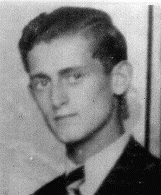
-
Alfred (Fredl) Krakauer
ID CardAlfred was the fifth of six children born to Jewish parents in a small town in Moravia, where his father ran a dry-goods and clothing store. The Krakauers spoke both Czech and German at home. In 1929 and 1930, after graduating from secondary school, Alfred served in the Czechoslovakian army. He enjoyed skiing and also played soccer for the Maccabi Jewish team. 1933-39: Alfred graduated in 1934 from Prague's Industrial School for Art. He became a graphic artist and decided to remain in Prague because of…
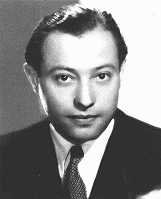
-
Leo Nitschke
ID CardLeo was one of two children born to Jewish parents in the Moravian capital of Brno. When Leo was a child his father died, and Leo and his sister, Edita, were raised by their German-born mother. On November 27, 1931, Leo graduated with a law degree from Brno University. 1933-39: After courting Hilda Krakauerova, a dental technician, Leo married her on December 23, 1935. Leo served as a district judge in Brno and in the town of Postejov, and in 1938 he was appointed judge and secretary to the Moravian…
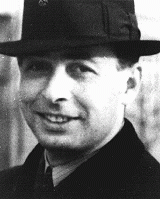
-
Laszlo Schwed
ID CardLaszlo was raised by Hungarian-speaking Jewish parents in the town of Kiskunfelegyhaza in southeastern Hungary. He opened a business selling goose meat, feathers, down and quilts. In 1931 he married Anna Mahrer, from Budapest, and they had a daughter in January 1932. 1933-39: Laszlo and Anna had a second child, a son. They raised their two children in a comfortable home. Kiskunfelegyhaza was located in a rural part of Hungary. In May 1939, the Hungarian government enacted a law that defined Jews as alien…
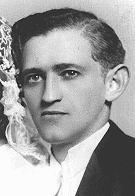
-
Reichstag fire
FilmThis footage shows the Reichstag (German parliament) building on the day after it was set on fire. While the origins of the fire on February 27 are still unclear, Hitler blamed Communists for the incident. The Reichstag Fire Decree of February 28, 1933, suspended constitutional guarantees. Communist and Socialist deputies were expelled from the parliament. Shortly after the decree was issued, the Nazis established concentration camps for the internment of political opponents.
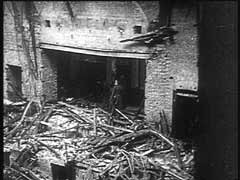
-
1931 studio portrait of Abraham Moshe Muhlbaum
PhotoAbraham and his family fled from Berlin to Amsterdam in October 1938. They found refuge in the Netherlands until January 28, 1943, when all the members of the Muhlbaum family, except Abraham, were deported to Westerbork. Abraham escaped over the rooftops during the round-up. He gradually established a new life as a member of a Dutch resistance group that included Joop Westerweel. In 1944, Abraham was arrested as a member of the resistance (his Jewish identity remained hidden). He was held…
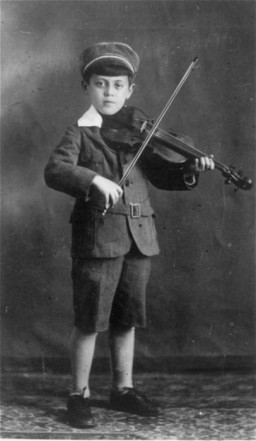
-
SS: Key Dates
ArticleKey dates in the history of the SS (Schutzstaffel; Protection Squadrons), charged with the leadership of the “Final Solution,” the murder of European Jews.

-
Krakow Ghetto: Key Dates
ArticleExplore a timeline of key events during the history of the Krakow ghetto in German-occupied Poland.
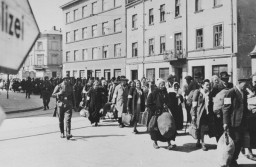
-
SS Police State
ArticleThe SS oversaw policing, intelligence, and the camp system in Nazi Germany. Learn more about the Schutzstaffel and its rise to power.
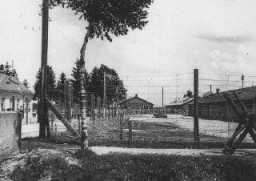
-
Hermann Ludwig Maas
ArticleHermann Ludwig Maas, a Protestant pastor in Heidelberg, Germany, was a rescuer and clergyman who stood in solidarity with the Jewish community.
-
German Wartime Expansion
ArticleBetween 1939-1942, Nazi Germany invaded multiple countries across Europe. Learn more about German expansion during World War II.

-
Polish Jewish Refugees in Lithuania: Unexpected Rescue, 1940–41
ArticleLearn more about the efforts of L.P.J. de Decker, Jan Zwartendijk, and Chiune Sugihara to help Polish Jewish refugees escape Lithuania during the war.
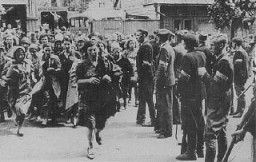
-
Nazi Terror Begins
ArticleAfter rising to power in January 1933, the Nazis began the process of moving Germany from a democracy to a dictatorship. Learn more.

-
Corrie ten Boom
ArticleCorrie ten Boom was recognized as a Righteous Among the Nations for her efforts to shelter Jews during the German occupation of the Netherlands

-
The Warsaw Ghetto Uprising
ArticleThe Warsaw ghetto uprising was the largest uprising by Jews during World War II. 100s of ghetto fighters fought heavily armed and well-trained Germans for nearly a month.

-
1938: Key Dates
ArticleExplore a timeline of key events in the history of Nazi Germany during 1938.

-
1939: Key Dates
ArticleExplore a timeline of key events during 1939 in the history of Nazi Germany, World War II, and the Holocaust.
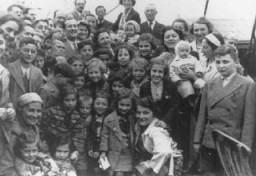
-
1945: Key Dates
ArticleExplore a timeline of key events during 1945 in the history of Nazi Germany, World War II, the Holocaust, and liberation and the aftermath of the Holocaust.

-
Nazi Propaganda and Censorship
ArticleNazi efforts to control forms of communication through censorship and propaganda included control of publications, art, theater, music, movies, and radio.

-
King Christian X of Denmark
ArticleDid King Christian X of Denmark wear a yellow star in support of the Danish Jews? Read more about the historical truth behind the legend.
-
The 42nd Infantry Division during World War II
ArticleThe 42nd Infantry Division participated in major WWII campaigns and is recognized for liberating the Dachau concentration camp in 1945.
-
Refugees
ArticleThe search for refuge frames both the years before the Holocaust and its aftermath. Learn about obstacles refugees faced when searching for safe havens.

-
Gerda Blachmann Wilchfort describes the mood of passengers on the "St. Louis" after they were denied entry into Cuba
Oral HistoryGerda and her parents obtained visas to sail to Cuba on the "St. Louis" in May 1939. When the ship arrived in Havana harbor, most of the refugees were denied entry and the ship had to return to Europe. Gerda and her parents disembarked in Belgium. In May 1940, Germany attacked Belgium. Gerda and her mother escaped to Switzerland. After the war, they were told that Gerda's father had died during deportation.

-
Isak Saleschutz
ID CardIsak was one of seven children born to devout Hasidic Jewish parents living in Dubas. By 1900, all of his siblings had immigrated to America; Isak remained in Poland due to his strong religious convictions. Through an arranged marriage, he was wed to Ester Berl when he was 18. They settled in Kolbuszowa, a small town near Dubas, where Isak ran a successful wholesale general store. 1933-39: On September 9, 1939, the German army occupied Dubas. They hanged two Jews to demonstrate the consequences of not…
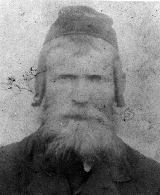
-
Karl-Heinz Kusserow
ID CardKarl-Heinz was born during World War I, while his father was in the German army. After the war, his Lutheran parents became Jehovah's Witnesses and gave their children daily Bible lessons. When Karl-Heinz was 13, the family moved to the rustic Westphalian town of Bad Lippspringe. Their home became the headquarters of a new Jehovah's Witness congregation. 1933-39: Because of the Jehovah's Witnesses' missionary work, and because their sole allegiance was to God and His commandments, their activities were…
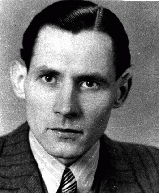
-
Fischel (Philip) Goldstein
ID CardFischel was the youngest of five children. He came from a Jewish family of artisans; his father was a tailor, his uncles were furriers, and his sister was a dressmaker. Fischel started his education at a Jewish parochial school at age 3, where he studied Hebrew and Yiddish. He continued his education at Jewish private schools until age 10, when he entered Polish public schools. 1933-39: After graduating from the Polish public school system at age 14, Fischel started an apprenticeship in his father's…

-
Helen Katz
ID CardThe youngest of eight children, Helen was born and raised in a religious Jewish family living in a town in northeastern Hungary. She was the "baby" of the family and the focus of everyone's hopes and affection. Although her Hebrew name was Hannah, her family called her by her nickname, Potyo, which meant "the dear little one." 1933-39: Helen liked school, but was afraid because some of the kids and teachers hated Jews. There was talk that there might be a war. Her mother wanted them to leave Hungary…

-
Wladyslaw Tadeusz Surmacki
ID CardBorn to Catholic parents, Wladyslaw attended schools in Warsaw and earned a degree in survey engineering in Moscow in 1914. After fighting in World War I, he commanded a horse artillery division in Warsaw, worked for Poland's Military Geographic Institute, and taught topography courses. He started a family in 1925, and after he retired from the army in 1929 he founded a surveying company. 1933-39: When war with Germany became imminent in the summer of 1939, Wladyslaw volunteered to fight but was rejected…
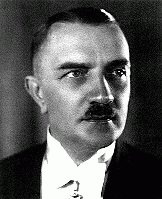
-
Itka Wlos
ID CardItka was raised in a Yiddish-speaking, religious Jewish family in Sokolow Podlaski, a manufacturing town in central Poland with a large Jewish population of about 5,000. Itka came from a poor family. After completing her public schooling in Sokolow Podlaski at the age of 14, she began to work. 1933-39: Itka was a young woman, unmarried and living with her parents when war between Germany and Poland broke out on September 1, 1939. German aircraft bombed Sokolow Podlaski's market and other civilian targets…

-
Fela Perznianko
ID CardFela was the older of two children born to Jewish parents living in Zakroczym, a town on the Vistula River near Warsaw. Her father was a respected attorney. As a young woman, Fela worked as a hat designer in Warsaw, until she married Moshe Galek when she was in her late 20s. She moved to the nearby town of Sochocin, where her husband owned a pearl-button factory. Fela and Moshe raised four daughters. 1933-39: In 1936 the Galeks moved to Warsaw, attracted by the city's cultural life. When Germany invaded…

-
Chaia Gurvitz
ID CardFrom a Jewish family, Chaia lived outside Kovno, a city with a large Jewish population that was renowned for its Hebrew school system. Chaia ran a grocery store with her husband, a retired shoemaker, and their daughter Yenta. 1933-39: Chaia is expecting her daughter Feiga, Feiga's husband, Josef, and her grandson, Abraham, for dinner. Feiga works so hard all week in her beauty shop, Chaia is glad she can help out by preparing the big Sunday meal. She has baked a special cake for Abe. Chaia hopes the…

-
Feiga Malnik
ID CardRaised in a Jewish family, Feiga lived with her husband, Josef, in Kovno, a city with a large Jewish community of 38,000. Kovno was situated at the confluence of two rivers, and with its opera company, chic stores and lively nightclubs, it was often called "Little Paris." Feiga was a beautician and Josef was a barber, and together they ran a shop in downtown Kovno. 1933-39: Every day Josef and Feiga walk to their shop, which is near their house. It's hard work, being a beautician--Feiga is on her feet…

-
Hela Los
ID CardOne of nine children, Hela grew up in the Polish capital of Warsaw. Her father was an art and antique furniture dealer and had a store on Marszalkowska Street. Every year, from the beginning of the summer break until the Jewish High Holidays in the fall, the Los family vacationed in the town of Miedzeszyn, located a short train ride's distance from Warsaw. 1933-39: Hela and her family were still at their vacation home when the Germans entered Warsaw on September 28, 1939. As soon as it became possible,…
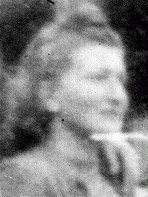
-
Frimit Bursztyn
ID CardFrimit was one of eight children born to Yiddish-speaking, religious Jewish parents. The Bursztyns lived in the heart of the same Jewish neighborhood in Warsaw where Frimit's father owned and operated a bakery located on Zamenhofa Street. In 1920 the Bursztyns moved to a comfortable, two-bedroom apartment in the same neighborhood at 47 Mila Street. Frimit attended Warsaw public schools. 1933-39: By 1939 six of Frimit's brothers and sisters had already moved out. Only Frimit and her younger brother were…
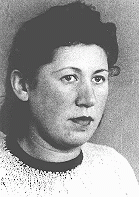
-
Franz Monjau
ID CardAfter secondary school, Franz studied painting at Duesseldorf's Academy of Fine Arts, eventually shifting to art education. He joined an avant-garde group rebelling against traditional painting. Later, he taught art to high school students. For Franz the drift towards fascism was frightening, as was the increasing antisemitism. But being only half Jewish, he did not feel worried about his personal safety. 1933-39: Hitler became chancellor of Germany on Franz's thirtieth birthday. Five months later Franz…
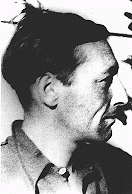
-
Leif Donde
ID CardLeif was born to a Jewish family in the Danish capital of Copenhagen. Both of his parents were active in the Jewish community there, and his father owned a small garment factory. The majority of Denmark's 6,000 Jews lived in Copenhagen before the war. Despite its size, the city's Jewish population supported many Jewish organizations, often aiding Jewish refugees from all over Europe. 1933-39: Leif went to a Jewish nursery school, which was next to a girls' school in Copenhagen. He didn't like his school…
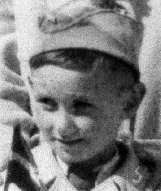
-
Gisha Galina Bursztyn
ID CardGisha was raised by Yiddish-speaking, religious Jewish parents in the town of Pultusk in central Poland. She married in the late 1890s and moved with her husband, Shmuel David Bursztyn, to the city of Warsaw, where Shmuel owned and operated a bakery on Zamenhofa Street in the city's Jewish section. In 1920 the Bursztyns and their eight children moved to a two-bedroom apartment at 47 Mila Street. 1933-39: By 1939 six of Gisha's children were grown and had left home: her eldest daughters had married, and…
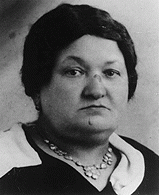
-
Zofia Yamaika
ID CardZofia was raised in a well-to-do, prominent Hasidic Jewish family in Warsaw. Uneasy with the constant tension between the Polish people and the Jewish minority, Zofia joined the communist student club Spartacus when she was a teenager. Spartacus actively campaigned against the growing fascist movement in Europe. 1933-39: When Warsaw surrendered to the Germans on September 28, 1939, Zofia was 14 years old. She stopped going to school. Though the Nazis banned Spartacus, she secretly helped to revive the…
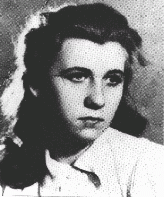
-
Boria Lerner
ID CardBoria was born to a Jewish family living in the Bessarabian province when it was still a part of the Russian Empire. Following Romania's 1918 annexation of the province, life for Bessarabia's 200,000 Jews worsened. Subject to more widespread antisemitic laws and pogroms than while under Tsarist Russian rule, many Bessarabian Jews emigrated overseas or sought refuge back in Soviet villages. 1933-39: Boria became active in a local revolutionary communist group and was arrested and jailed many times. After…

-
Rachela Rottenberg
ID CardThe younger of two children born to Jewish parents, Rachela grew up in Radom, an industrial town located some 60 miles south of Warsaw. One-quarter of the city's 100,000 prewar population was Jewish. Rachela's father was a Zionist and was active in municipal affairs. Her mother did volunteer work. l933-39: Germany invaded Poland on September 1, 1939. On September 5, with the Germans rapidly advancing, Rachela's family sought temporary safety with relatives in Warsaw. They got separated along the way.…

-
Maria Terez Halpert Katz
ID CardAlso known by her Yiddish name, Tobe, Terez was raised in a religious Jewish family. Her father and two brothers were rabbis. Though Terez was a promising student, she didn't pursue an advanced education because her traditional family wanted her to marry. So Terez married Menyhert Katz and moved to the town of Kisvarda [in Hungary]. There, she raised five daughters and one son; two other sons died. 1933-39: Terez's twin sons died when they were 8 months old, and she was convinced that their death was a…

-
Izabella Katz
ID CardIzabella was one of eight children raised in a religious Jewish family in the small town of Kisvarda in northeastern Hungary. Every Friday Izabella and her brother and four younger sisters went to the library to borrow the maximum number of books for their mother. Izabella attended public schools and longed to move to a big city. 1933-39: Antisemitism was prevalent. Izabella can't count the number of times she was called "smelly Jew." Her family cringed at "Heil Hitler" speeches from Germany on the radio…
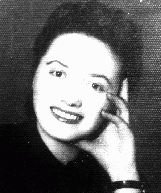
-
Elka Rosenstein
ID CardElka was raised in a large, Yiddish-speaking Jewish family in Sokolow Podlaski, a manufacturing town in central Poland with a large Jewish population of some 5,000. Elka was 14 when she graduated from middle school. After completing her schooling, she became a tailor. Working at home, she made clothes for different clothiers in town. 1933-39: Elka was unmarried and living with her parents when war between Germany and Poland broke out on September 1, 1939. German aircraft bombed Sokolow Podlaski's market…
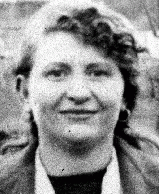
-
Fryda Litwak
ID CardFryda was one of five children born to religious Jewish parents in the industrial city of Lvov. She grew up in the same building as her paternal grandparents. Fryda attended public and private schools in Lvov, and grew up in a non-Jewish neighborhood, speaking Polish, German and Yiddish. 1933-39: When Fryda finished secondary school, she could not go to the university like her older siblings because Polish universities had instituted discriminatory quotas for Jews. In September 1939 the Germans invaded…

-
Thomas Elek
ID CardThomas was born to a Jewish family who moved to Paris when he was 6. His father's outspoken criticism of the fascist government and his affiliation with the Hungarian Communist Party led to the family's expulsion from Hungary in 1930. With the help of his father, a professor of modern languages, Thomas quickly learned French and excelled in school. He had a special interest in poetry and music. 1933-39: Thomas's father often argued against fascism, and he was greatly disturbed when Hitler became the…
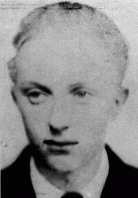
-
Sarah Rivka Felman
ID CardOne of seven children, Sarah was raised in a Yiddish-speaking, religious Jewish home in Sokolow Podlaski, a manufacturing town in central Poland with a large Jewish population of some 5,000. Sarah's parents ran a grain business. In 1930, Sarah began attending public elementary school in Sokolow Podlaski. 1933-39: After graduating from middle school in 1937 at the age of 14, Sarah helped out her now widowed mother in the family's grain business. Two years later, Germany attacked Poland. German aircraft…
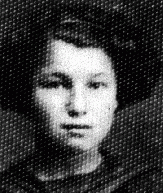
-
Chinka Schwarzbard Felman
ID CardOne of six children, Chinka was raised in a Yiddish-speaking, religious Jewish family in the town of Ostrow Mazowiecka, where her father was a wine maker. In 1910 she married Ephraim Isaac Felman, and a few years later the couple moved to Sokolow Podlaski, where Chinka helped her husband run a grain business. The Felmans had seven children, two of whom died in infancy. 1933-39: Chinka's husband died in 1935, and she took over the grain business with the help of her children. That same year, her oldest…

-
Fischel Felman
ID CardFischel was the oldest of seven children in a Yiddish-speaking, religious Jewish family. When he was a small child, his parents moved the family to Sokolow Podlaski, a manufacturing town in central Poland with a large Jewish population of about 5,000. Fischel was sent to study at a religious school. In 1932, when he was 21 years old, Fischel was inducted into the Polish army. 1933-39: After two years in the Polish cavalry, Fischel returned to Sokolow Podlaski, where he apprenticed to become a carpenter…
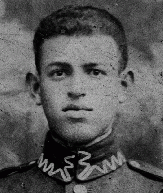
-
Moishe Felman
ID CardThe youngest of seven children, Moishe was raised in a Yiddish-speaking, religious Jewish home in Sokolow Podlaski, a manufacturing town in central Poland with a large Jewish population of some 5,000. Moishe's parents ran a grain business. Moishe attended a Jewish school and began public school in Sokolow Podlaski in 1933. 1933-39: Summer vacation had just finished and 13-year-old Moishe was about to begin another year at elementary school when the Germans invaded Poland on September 1, 1939. German…

